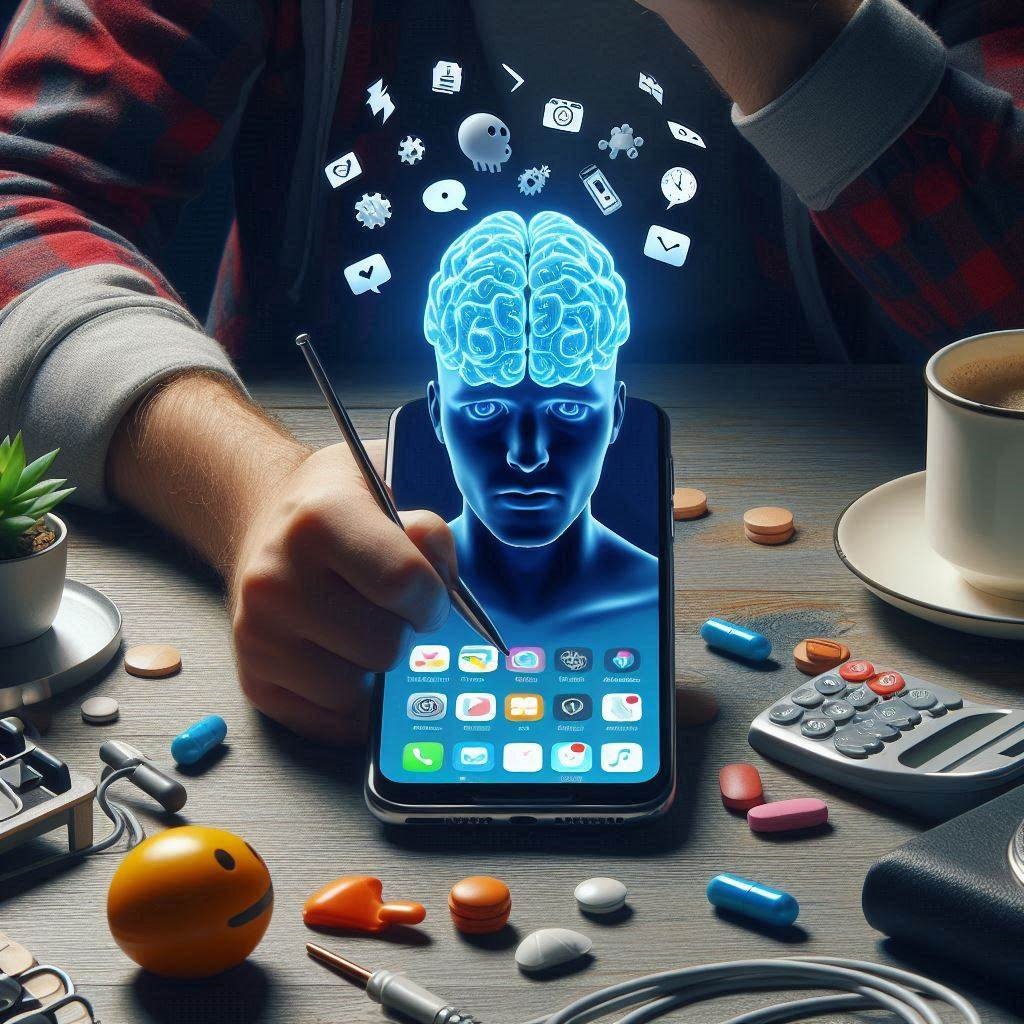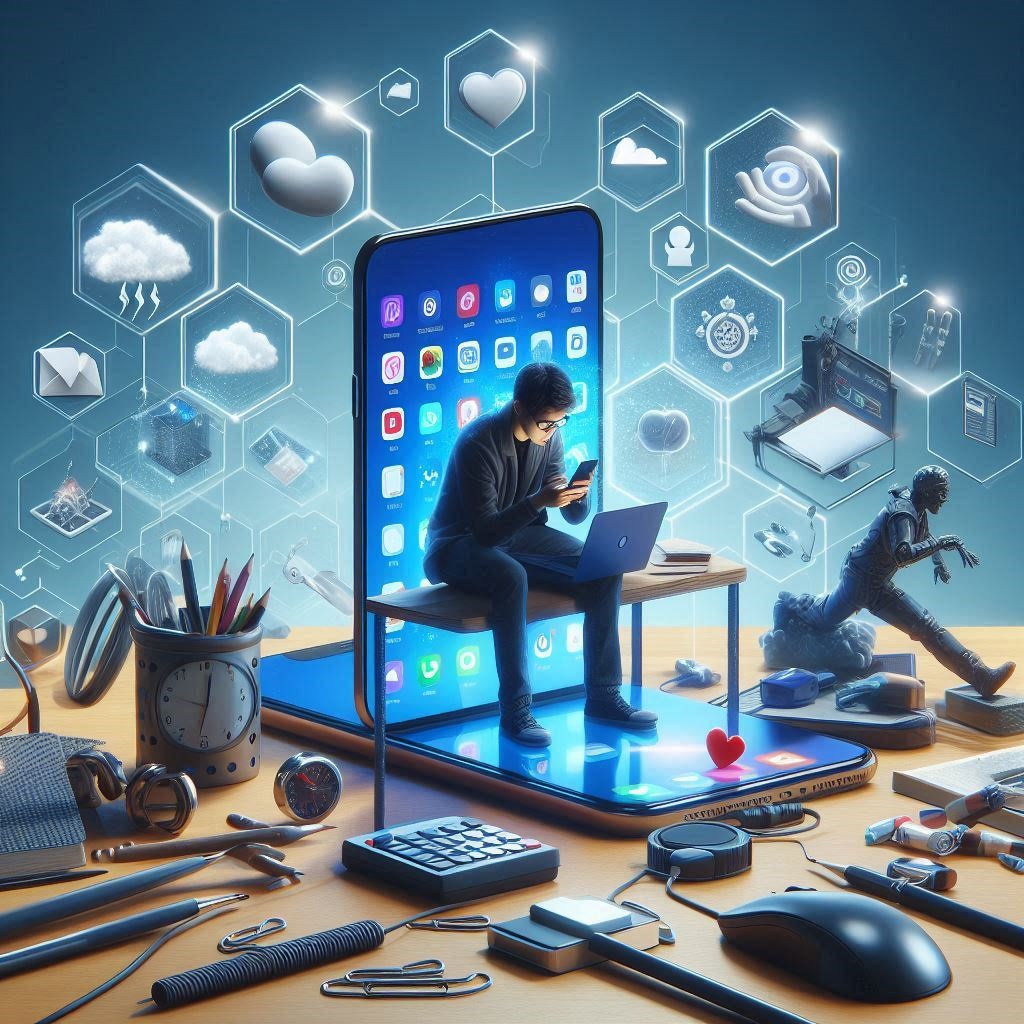In today’s digital age, smartphones have become indispensable tools, seamlessly integrated into every aspect of daily life. These devices offer unparalleled convenience and connectivity, from communication and work to entertainment and education. However, this increasing reliance on smartphones is taking a toll on our lives, adversely affecting physical health, mental well-being, and social interactions. To deal with all these scenarios, it is necessary to learn how smartphones impact mental health and realistic solutions to these adverse effects.
How Smartphones Impact Mental Health?

The mental health crisis among youth is an increasingly significant concern, and the pervasive use of smartphones has been identified as a contributing factor. Here are some key points to consider regarding this issue:
Increased Screen Time
-
- Disruption of Sleep Patterns: Excessive use of smartphones, especially before bedtime, can interfere with sleep. The blue light emitted by screens can suppress the production of melatonin, a hormone that regulates sleep.
-
- Reduced Physical Activity: More time spent on smartphones often means less time for physical activities, which are crucial for both physical and mental health.
Social Media and Mental Health
-
- Comparison and Self-Esteem: Social media platforms often present idealized versions of people’s lives. Continuous exposure to these curated images can lead to negative self-comparisons and lower self-esteem among youth.
-
- Cyberbullying: The anonymity provided by the internet can facilitate bullying behaviors. Victims of cyberbullying often experience anxiety, depression, and in severe cases, suicidal thoughts.
Addiction and Dependency
-
- Dopamine Feedback Loop: Smartphone apps, particularly social media, are designed to be addictive. Notifications and likes provide a dopamine rush, leading to dependency and compulsive usage.
-
- Impact on Academic Performance: Smartphone addiction can lead to distraction and reduced academic performance as students may spend more time on their devices rather than studying.
Mental Health Disorders
-
- Anxiety and Depression: Studies have shown a correlation between heavy smartphone use and increased rates of anxiety and depression. The constant connectivity can lead to stress and feelings of being overwhelmed.
-
- Attention Disorders: The constant barrage of information and multitasking can contribute to attention disorders. The ability to focus and concentrate on tasks can diminish over time.
The Effects Of Early Smartphone Intervention In Children
Early smartphone use in childhood adversely affects children’s growth and development in several significant ways. One of the primary concerns is the impact on cognitive development. The human brain undergoes critical periods of growth and development during childhood, and excessive screen time can interfere with these processes.
Constant exposure to screens, particularly interactive ones like smartphones, can impair a child’s ability to concentrate and maintain attention. Smartphones often encourage rapid shifting from one activity to another, hindering sustained attention and focus, crucial skills for academic success and everyday tasks.
Additionally, the physical health of children is compromised by prolonged smartphone use. Increased screen time often means less physical activity, contributing to sedentary lifestyles. This can lead to a range of health issues, including obesity, cardiovascular problems, and poor posture.
The blue light emitted by screens also disrupts sleep patterns by interfering with melatonin production, the hormone responsible for regulating sleep. Poor sleep quality and insufficient sleep can affect a child’s mood, cognitive functioning, and overall health, leading to irritability, reduced academic performance, and weakened immune systems.
Social development is another critical area negatively impacted by early and excessive smartphone use. Smartphones can limit face-to-face interactions, which is essential for developing social skills and emotional intelligence. Through in-person interactions, children learn to read facial expressions, tone of voice, and body language.
Smartphones can be a major distraction in terms of academic development. The temptation to check messages, play games, or browse the internet can interfere with homework and study time, leading to poorer academic performance. The multitasking encouraged by smartphone use can also impair a child’s ability to engage in deep, focused learning, which is essential for mastering complex subjects and developing critical thinking skills.
Why Do People Find It Difficult To Limit The Use Of Smartphones?
Despite the numerous side effects associated with long-term smartphone use, many people find it difficult to avoid extended screen time for several reasons.
Firstly, smartphones have become integral to daily life, offering convenience and efficiency in communication, information access, and task management. They serve as tools for work, education, and social interaction, making it challenging for individuals to reduce their usage significantly.
Secondly, smartphones and their applications are designed to be addictive. Features such as notifications, likes, and continuous content scrolling provide instant gratification, triggering dopamine release in the brain. This creates a rewarding feedback loop, making it difficult for users to disengage.
Social pressures also play a significant role. The fear of missing out (FOMO) on social interactions, news, or trends compels people to stay constantly connected. Social media platforms, in particular, create a sense of obligation to remain engaged to maintain social relationships and stay updated.
Moreover, the pervasive nature of smartphones has led to changes in habits and routines. Many people rely on their devices for relaxation, entertainment, and even coping mechanisms for stress and anxiety. This habitual use can become deeply ingrained, making it hard to break away.
Additionally, there is often a lack of awareness or acknowledgment of the adverse effects. While the negative impacts of excessive smartphone use are well-documented, they may not be immediately apparent, leading people to underestimate the long-term consequences.
Lastly, societal norms and expectations have evolved to favor constant connectivity. In both personal and professional spheres, there is an expectation to be reachable and responsive, reinforcing the necessity of smartphone use.
Realistic Solutions For Reducing The Adverse Effects Of Smartphones

All the solutions that can help people efficiently reduce the risk of acute to chronic adverse effects of smartphones are given below:
Setting Boundaries and Rules
-
- Establish specific times during the day when no one uses smartphones, such as during family meals, an hour before bedtime, or during certain hours of the evening. This helps create opportunities for face-to-face interactions and reduces dependency on screens.
-
- Designate areas in the home where smartphones are not allowed, such as the dining room, bedrooms, and bathrooms. This can help minimize distractions during important activities like meals and sleep.
Encouraging Alternative Activities
-
- Encourage children and adults to participate in sports, outdoor games, walking, biking, or any physical exercise. This not only reduces screen time but also promotes physical health and well-being.
-
- Encourage engagement in non-digital hobbies such as reading books, drawing, playing musical instruments, cooking, gardening, or any other creative activity. These activities help develop new skills and reduce reliance on smartphones for entertainment.
- Implementing Digital Well-being Tools
-
- Utilize apps and built-in features on smartphones that track and limit screen time. These tools can help users understand their usage patterns and set limits on app usage.
-
- Set reminders to take regular breaks from screens, such as using the 20-20-20 rule (every 20 minutes, take a 20-second break, and look at something 20 feet away) to reduce eye strain.
Educational Initiatives
-
- Conduct awareness campaigns in schools, workplaces, and communities to educate people about the negative effects of excessive screen time and the benefits of a balanced digital lifestyle.
-
- Teach children and adults how to use technology responsibly, including how to recognize and avoid harmful content, understand privacy settings, and manage digital footprints.
Parental Controls and Monitoring
-
- Parents should monitor their children’s smartphone use by checking screen time reports, setting usage limits, and ensuring they are using age-appropriate apps and websites.
-
- Use parental control apps to block inappropriate content and monitor online activity. These filters can help protect children from harmful material and ensure a safer digital environment.
Promoting Face-to-Face Interaction
-
- Organize and encourage participation in social activities that involve direct interaction, such as playdates, family outings, community events, and group hobbies. These activities help build social skills and strengthen relationships.
-
- Adults should set an example by limiting their own screen time, prioritizing face-to-face conversations, and showing children that it’s possible to have meaningful interactions without relying on smartphones.
Balancing Technology Use in Education
-
- Schools should incorporate regular breaks from screens during the school day and promote activities that do not involve digital devices, such as outdoor recess, physical education, and hands-on projects.
-
- Encourage students to complete some assignments without using technology, fostering a balance between digital and traditional learning methods. This can help develop a well-rounded set of skills.
Mindfulness and Mental Health Practices
-
- Practice mindfulness and meditation techniques to reduce stress and improve mental focus. Activities such as deep breathing, yoga, and mindful walking can be effective alternatives to screen time for relaxation.
-
- Provide access to counseling and mental health resources for individuals experiencing anxiety, depression, or other issues related to excessive screen time. Support from mental health professionals can be crucial in developing healthier habits.
Workplace Policies
-
- Employers should promote regular breaks during work hours to reduce screen fatigue. This can include short breaks for stretching, walking, or simply resting the eyes.
-
- Implement policies that limit work-related emails and messages outside of office hours to help employees disconnect and maintain a healthy work-life balance.
Setting Personal Goals
-
- Periodically disconnect from all digital devices for a set period, such as a day or weekend, to recharge and focus on offline activities. This can help reset habits and reduce dependency on technology.
-
- Set personal goals for reducing screen time and gradually work towards achieving them. Track progress, reward milestones, and adjust habits as needed to maintain a healthy balance between online and offline activities.
For Improved Cognitive Functions: Dripdok’s At Home Nootropic IV Infusion
Conclusion
To mitigate the adverse effects of excessive smartphone use on children, it is essential to set boundaries, encourage alternative activities, use digital well-being tools, educate about responsible usage, implement parental controls, promote face-to-face interaction, balance technology in education, practice mindfulness, establish supportive workplace policies, and set personal goals for screen time reduction, fostering healthier habits and a more balanced, fulfilling lifestyle.
